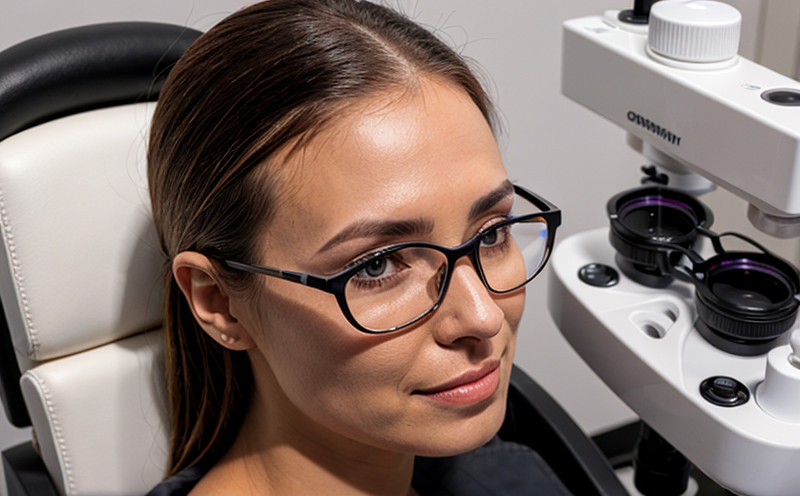EP Osmolality Testing of Ophthalmic Solutions
The European Pharmacopoeia (EP) sets stringent standards for pharmaceutical products to ensure their safety, quality, and efficacy. Among these standards is the test for osmolality in ophthalmic solutions. This critical parameter ensures that medications are neither too hypertonic nor hypotonic to avoid adverse effects on the ocular surface.
Understanding the concept of osmolality starts with recognizing its importance in maintaining physiological balance within the eye. Osmolality is a measure of the number of particles dissolved per kilogram of water and directly impacts how solutions interact with biological tissues. For ophthalmic products, proper osmolality ensures that they do not cause irritation or damage to the delicate ocular surface.
The EP specifies that the osmolality of ophthalmic solutions should be within a specific range to prevent osmotic stress on the cornea and other eye tissues. This is crucial for both therapeutic and diagnostic products, as even small deviations can lead to significant side effects or diminished product efficacy.
Accurate measurement of osmolality helps in formulating stable and safe ophthalmic solutions that meet regulatory standards. It also aids in the development process by ensuring formulations are optimized for patient use without causing discomfort or harm. This service is particularly important for companies involved in research, manufacturing, and quality assurance.
The testing procedure involves several steps: preparation of the sample, calibration of the instrument, measurement using a cryoscopic method, and interpretation of results against EP guidelines. Each step requires precision to ensure reliable data that can be used for decision-making during product development and compliance checks.
Our laboratory utilizes advanced equipment such as freezing point depression osmometers that adhere strictly to EP methods. These instruments provide precise measurements which are essential for regulatory submissions, internal quality assurance processes, and research studies. By leveraging this expertise, we can offer comprehensive support to pharmaceutical manufacturers looking to meet rigorous standards.
Understanding the broader implications of osmolality testing within the context of ophthalmic products highlights its significance in ensuring patient safety and product efficacy. As an accredited laboratory specializing in EP compliance, we provide reliable results that are crucial for maintaining high-quality standards across the industry.
Applied Standards
- EP 5.14: Osmolar Concentration of Pharmaceutical Solutions: This section specifies the principles and methods for determining osmolality, including the use of cryoscopic techniques.
- ASTM E928-19: Standard Test Method for Determining Freezing Point Depression of Aqueous Solutions by Means of a Cryoscope: Provides detailed procedures for measuring freezing points under controlled conditions.
Scope and Methodology
| Step | Description |
|---|---|
| Sample Preparation | Ensure the sample is representative and free from contaminants. Dilute if necessary to achieve optimal reading. |
| Instrument Calibration | Calibrate the freezing point depression osmometer according to manufacturer’s instructions before each use. |
| Measurement | Place a small quantity of the sample into the instrument and measure its freezing point. Compare this value against known standards. |
| Data Analysis | Analyze the measured freezing points to calculate osmolality based on the cryoscopic constant for water. |
International Acceptance and Recognition
- EP Compliance: The European Pharmacopoeia is widely recognized across Europe, ensuring that tests performed meet international standards.
- ASTM Standards: ASTM E928-19 is globally accepted for its precision and reliability in osmolality measurement.





